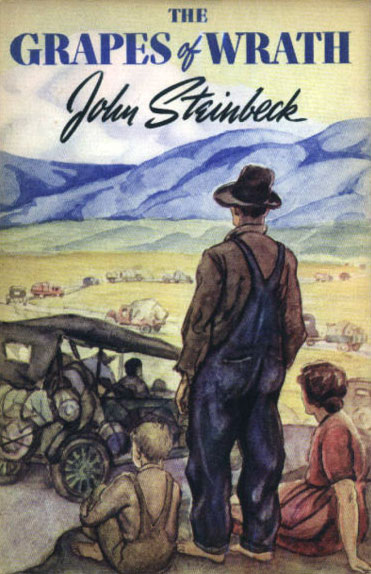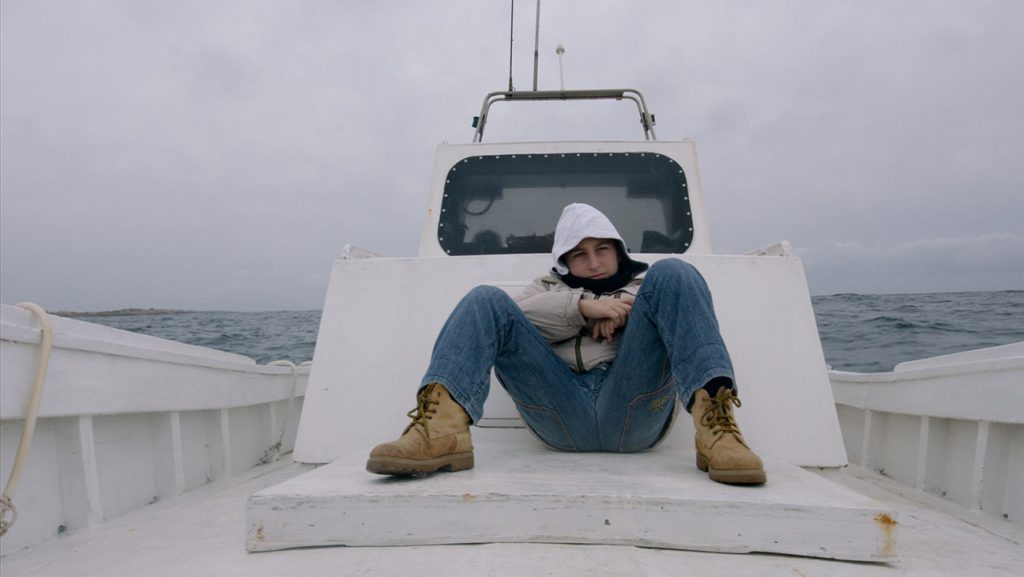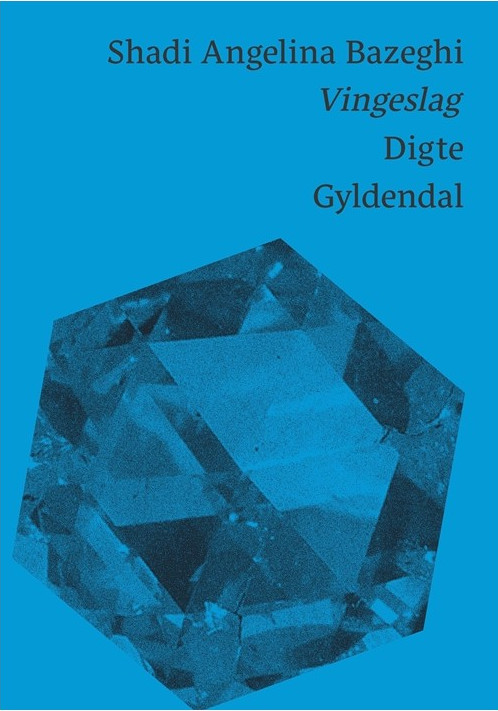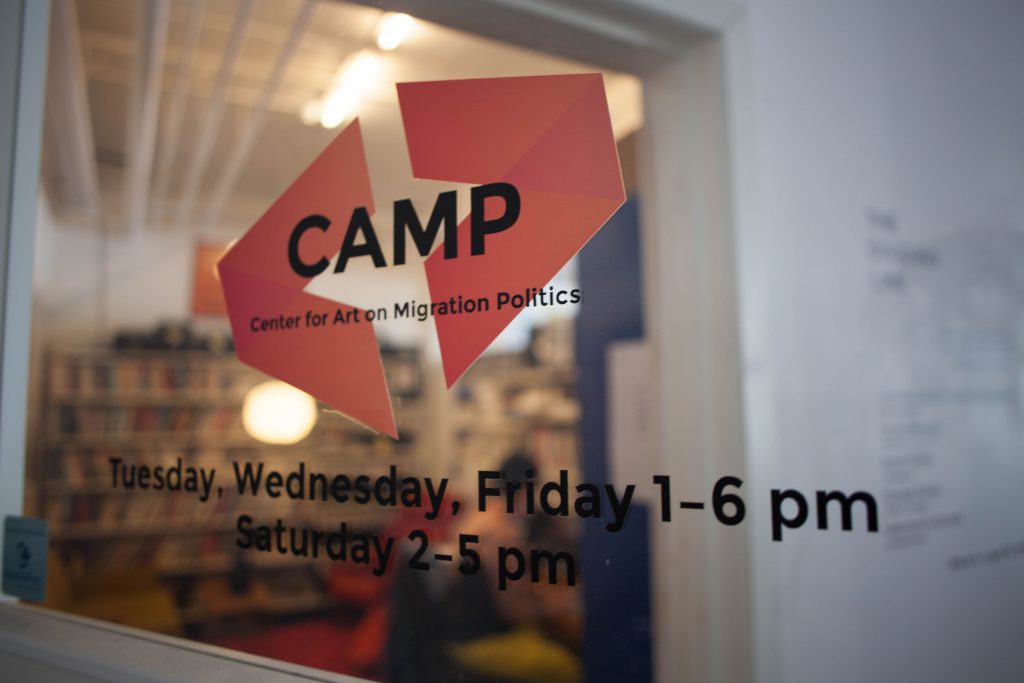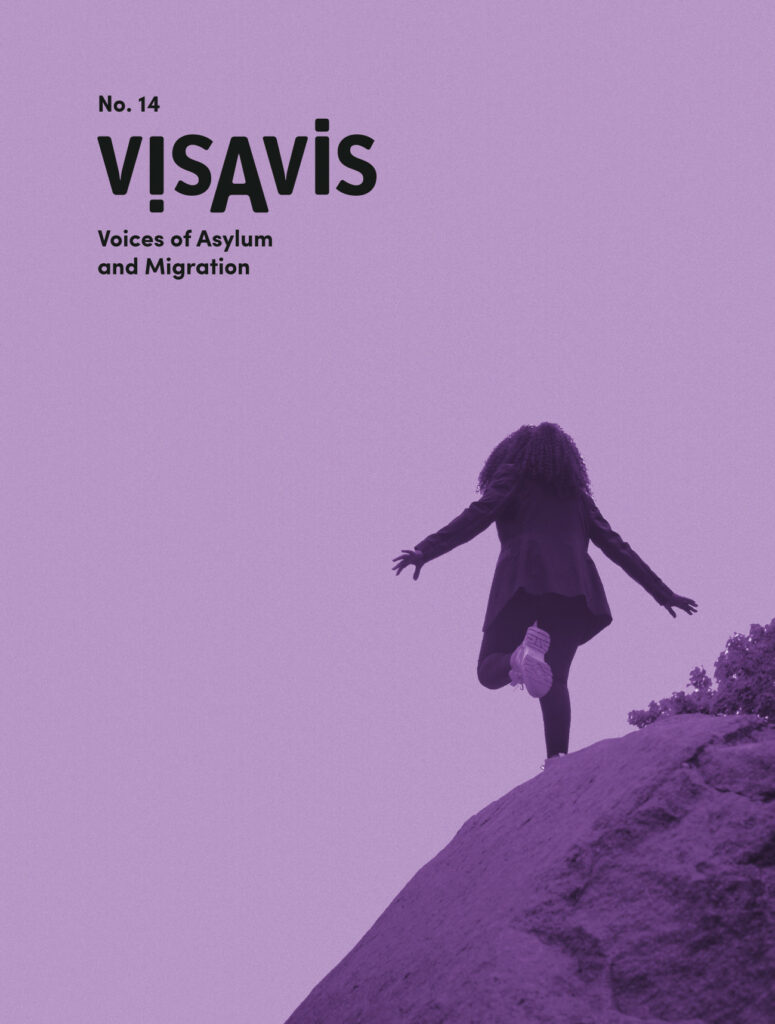John Steinbeck: Grapes of Wrath
Novel, 1939
I would like to share what is in my opinion one of the most significant books on the migration theme: Grapes of Wrath by John Steinbeck. This is the first novel showing the real life of people living on the bottom of society. The atmosphere is grim and painful. Because this shocking reality was not shared before, readers of that time didn’t believe that horrible things like this could happen in their American reality. But the book is in itself irrefutable evidence.
The story has a special and almost mystical beginning. Something in the spirit of Bergman. Former convict, Tom, returns to his home in Oklahoma and detects horrible changes: the land is totally empty, wind bends the trees, rickety doors, squalid houses in which there are no people. People of the land have uprooted and made a mass exodus. Under the tree sits a pastor who has lost faith, and in Tom’s house hides one of his former neighbours, a crazy man called Ford. Ford tells him what has happened while he was gone, and paints a completely apocalyptic picture. Interestingly, the cause of the apocalypse is in some sense God – God of the machines, of metal, of plastic, of giant skyscrapers, something powerful and impersonal: multinational corporations and banks.
Tom’s huge family has left their land because of the dream of a sunny, California “Promised Land”, where they have been promised sun, oranges and work. Grapes of Wrath turns into a depressing “road-trip”: Tom’s family sells all their things so they can buy a decrepit truck and go to California. On the difficult path, they lose relatives and friends and California turns out to be hell on earth: no food, no work, and no friendly people. And in our times, this story repeat itself: people fleeing or going after their dreams end up in a situation without hope.
In the end, Steinbeck points out that the individual can be saved by the collective, as Tom and his family reach a community who work and live together. They are happy to help each other. It turns into an almost pro-social agitation: As an individual you have no chance against the monster of capitalism.
(Patrick)
Fuocoammare (Fire at Sea)
Documentary, 2016
In this Italian documentary, we perceive Lampedusa through migrants arriving from the sea and through the mundane family life in the fishing community. In separate story lines we’re introduced to the island. A classical music broadcast echoes from the radio in an Italian kitchen, a kid with his slingshot in motion between rocky outcrops and low vegetation in search of migratory warblers. This traditional island life is juxtapositioned with the radio frequency of the coastguard, and the arrival of those who overcame the odds, crossing the
sea on vessels not remotely sea-worthy. With a patience that evokes the director Kiarostami, Fuocoammare portrays those who happen to find themselves on the island: a fisherman at dawn descending on the cliffs, the newly arrived pacing in the detention center in golden thermal blankets, untold narratives of flight, incarceration and of carrying on. A rare and recommendable testimony of a complex reality.
(Adam Qvist)
Shadi Angeline Bazhegi: Vingeslag (Fluttering of Wings)
Poems, 2015
In Vingeslag, Shadi Angelina Bazhegi’s poems delve deeply into the burden of war and displacement and what this means for the life and literature that follows. The poems present a chaotic and therefore precise depiction of a time of trauma. In the beginning of the book, Bazhegi writes: “I stop / or I seize up / like an old watch / that can’t bear to / count more / bloodthirsty / seconds”, and proceeds to cross-cut between memories of war, romantic relationships, doctor’s visits, lectures, mathematical equations and soccer. Fleeting memories can unexpectedly emerge at any given time and while the past has a constant hold on the present, the present keeps altering the past. These poems don’t explain the trauma or examine it from the outside. Through repetition and disruption, flashbacks and cross-cuts, they create a literary form that is one with its content. It’s a tough read that demands an equal amount of flexibility and willingness to change, from the reader, as is exhibited in the poems. The descriptions of PTSD aren’t served up as recognizable or easily digested tropes. The book is a form-conscious frontal attack; an indication of where Scandinavian literature might be headed in a continuing time of crisis. The poems are wide-ranging and include quotes from such different voices as: Jim Morrison, Forugh Farrokhzad, Sohrab Sepehri, Michael Strunge, Nima Yushij, Oscar Wilde, Albert Camus, Aldous Huxley, Inger Christensen, Mowlana Rumi, Roland Barthes, Mohammad Tagi Bahar and Archimedes.
(Liv Nimand Duvå)
CAMP – Center for Art and Migration Politics
Art space, Thoravej 7
CAMP is an art gallery situated in Trampoline House in Copenhagen. It was established in 2015 as a non-profit institution with a professional board of directors and the art collective Kuratorisk Aktion as daily managers. As the name implies, the gallery focuses on migration politics, and on the dehumanizing spaces of the nation state such as the refugee camp, the asylum center and the deportation center.
Through the prism of art, the gallery offers a different approach to migration. In public debates, it seems that issues related to migration are mainly discussed in two aspects: financial, or how migration affects the economy; and political, or how migration affects the alignment of the political establishment.
We are living in a European reality where refugees are sold to Turkey and Afghanistan for huge amounts of money. With an economic system based on the dictates of those in power, and the majority of individuals valued only as means of production, people become subjects of outright trade. In this light, I find that CAMP plays an important role.
If we want to change the system, people need to gain more knowledge about what goes on inside a refugee camp or behind the bars of an asylum or deportation center. I believe that CAMP exemplifies how an artistic perspective has a great potential to raise awareness. It may seem at first glance that this is only an example of one voice in the wilderness – the system cannot be beaten! But in a relatively short period of time CAMP has brought public recognition to a significant amount of work. The center’s first three exhibitions are now being presented in the National Gallery of Denmark.
I warmly encourage all interested to visit the web hashtag #artandmigration. Or even better, visit CAMP at The Trampoline House.
(Patrick)
